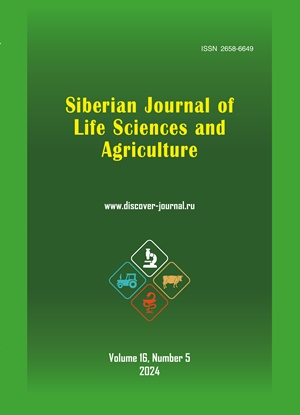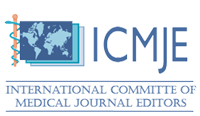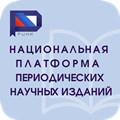ОНТОГЕНЕТИЧЕСКИЙ ПРОФИЛЬ АКТИВНОСТИ ГЛУТАТИОН-S-ТРАНСФЕРАЗЫ У MUSCA DOMESTICA L.
Аннотация
Обоснование. Являясь носителем множества патогенов, комнатная муха Musca domestica L. может представлять серьезные угрозы для здоровья человека и животных. M. domestica хорошо подходит в качестве модельного организма для изучения физиологии и биохимии насекомых, механизмов формирования инсектицидной резистентности, а также разработки и испытаний действия инсектицидов. Во всем мире обеспокоены проблемой устойчивости насекомых к инсектицидам, в связи с этим изучение ферментов насекомых очень важно для более полного понимания механизмов, лежащих в основе устойчивости к инсектицидным препаратам.
Цель. Изучить онтогенетический профиль активности глутатион-S-трансферазы у Musca domestica L.
Материалы и методы. Активность глутатион-S-трансферазы определяли на разных стадиях онтогенетического развития M. domestica у лабораторных (TY и UF) линий и природных (Nov и Nik) популяций с использованием субстрата 1-хлор-2,4-динитробензола при 340 нм в режиме кинетика. Удельную активность рассчитывали с учетом неферментативного преобразования субстрата, фактора разведения гомогената, содержания белка в пробе и выражали как изменение оптической плотности за 1 минуту на мг белка.
Результаты. Полученные результаты свидетельствуют об изменениях в активности глутатион-S-трансферазы в процессе жизненного цикла M. domestica, как у лабораторных линий, так и у природных популяций. Различия наблюдаются между разными стадиями онтогенетического развития. Активность фермента у TY линии выше, чем у UF линии практически на всех стадиях жизненного цикла насекомого. Среди природных активность выше у Nov популяции.
Заключение. Выявленные отличия между особями природных популяций, скорее всего, обусловлены разной инсектицидной нагрузкой в местах сбора насекомых. Отличия между особями лабораторных линий и природных популяций могут быть опосредованы разным набором генетической информации, передающейся из поколения в поколение. Связано это может быть с экспрессией отдельных изоформ, поскольку на экспрессию ферментов могут влиять различные факторы, в том числе и факторы окружающей среды, так что на генетическом уровне могут быть выбраны качественно различные формы и дифференциально экспрессированы. Полученные результаты могут быть использованы при разработке программ по контролю численности насекомых.
Информация о финансировании. Работа выполнена Всероссийским научно-исследовательским институтом ветеринарной энтомологии и арахнологии ТюмНЦ СО РАН в рамках государственного задания Министерства науки и высшего образования Российской Федерации (тема № FWRZ-2022-0022).
Скачивания
Литература
Список литературы
Беньковская Г. В. Принципы содержания лабораторных линий насекомых // Биомика. 2017. Т. 9. № 1. С. 24-32.
Калинина Е. В., Чернов Н. Н., Новичкова М. Д. Роль глутатиона, глутатионтрансферазы и глутаредоксина в регуляции редокс-зависимых процессов // Успехи биологической химии. 2014. Т. 54. С. 299-384.
Свидетельство о государственной регистрации программы для ЭВМ №2023617030. FAGT / Л. Я. Янгирова. – Заявка №2023615987. Дата поступления 28 марта 2023 г. Зарегистрировано в Реестре программ для ЭВМ 4 апреля 2023 г.
Allen R. G., Oberley L. W., Elwell J. H. Developmental patterns in the antioxidant defenses of the housefly, Musca domestica // Journal of Cellular Physiology, 1991, vol. 146, no. 2, pp. 270-276. https://doi.org/10.1002/jcp.1041460212
Dmochowska-Ślęzak K., Giejdasz K., Fliszkiewicz M., Żółtowska K. Variations in antioxidant defense during the development of the solitary bee // Osmia bicornis. Apidologie, 2015, vol. 46, no. 4, pp. 432-444. https://doi.org/10.1007/s13592-014-0333-y
Enayati A. A., Ranson H., Hemingway J. Insect glutathione transferases and insecticide resistance // Insect Molecular Biology, 2005, vol. 14, no. 1, pp. 3-8. https://doi.org/10.1111/j.1365-2583.2004.00529.x
Freeman J. C., Ross D. H., Scott J. G. Insecticide resistance monitoring of house fly populations from the United States // Pesticide Biochemistry and Physiology, 2019, vol. 158, pp. 61-68. https://doi.org/10.1016/j.pestbp.2019.04.006
Friedman R. Genomic organization of the glutathione S-transferase family in insects // Molecular Phylogenetics and Evolution, 2011, vol. 61, no. 3, pp. 924-932. https://doi.org/10.1016/j.ympev.2011.08.027
House Fly (Diptera: Muscidae): Biology, Pest Status, Current Management Prospects, and Research Needs / Geden C. J., Nayduch D., Scott J. G., Burgess E. R., IV, Gerry A. C., Kaufman P. E., Thomson J., Pickens V., Machtinger E. T. // Journal of Integrated Pest Management, 2021, vol. 12, no. 1, pp. 1-38. https://doi.org/10.1093/jipm/pmaa021
Detection and functional characterization of sigma class GST in Phlebotomus argentipes and its role in stress tolerance and DDT resistance / Hassan F., Singh K. P., Ali V., Behera S., Shivam P., Das P., Dinesh D. S. // Scientific Reports, 2019, vol. 9, pp. 1-15. https://doi.org/10.1038/s41598-019-56209-0
Molecular Evolution of the Glutathione S-Transferase Family in the Bemisia tabaci Species Complex / Harari O. A., Santos-Garcia D., Musseri M., Moshitzky P., Patel M., Visendi P., Seal S., Sertchook R., Malka O., Morin S. // Genome Biology and Evolution, 2020, vol. 12, no. 2, pp. 3857-3872. https://doi.org/10.1093/gbe/evaa002
Larval Development and Molting / Kaleka A. S., Kaur N., Kour Bali G. Edible Insects, 2019. https://doi.org/10.5772/intechopen.85530
Kolawole A. O., Olajuyigbe F. M., Ajele J. O., Adedire C. O. Activity of the Antioxidant Defense System in a Typical Bioinsecticide-and Synthetic Insecticide-treated Cowpea Storage Beetle Callosobrochus maculatus F. (Coleoptera: Chrysomelidae) // International Journal of Insect Science, 2014, vol. 6, pp. 99-108. https://doi.org/10.4137/IJIS.S19434
Kostaropoulos I., Mantzari A. E., Papadopoulos A. I. Alterations of some glutathione S-transferase characteristics during the development of Tenebrio molitor (Insecta: Coleoptera) // Insect Biochemistry and Molecular Biology, 1996, vol. 26, no. 8-9, pp. 963-969. https://doi.org/10.1016/S0965-1748(96)00063-X
Glutathione S–transferase in the defence against pyrethroids in insects / Kostaropoulos I., Papadopoulos A. I., Metaxakis A., Boukouvala E., Papadopoulou-Mourkidou E. // Insect Biochemistry and Molecular Biology, 2001, vol. 31, no. 4-5, pp. 313-319. https://doi.org/10.1016/s0965-1748(00)00123-5
Lowry O. H., Rosebrough N. J., Farr A. L., Randall R. J. Protein measurement with Folin phenol reagent // Journal of Biological Chemistry, 1951, vol. 193, pp. 265-275. https://doi.org/10.1016/S0021-9258(19)52451-6
Masoud H. M. M., Helmy M. S., Darwish D. A., Ibrahim M. A. Purification, characterization, and enzyme kinetics of a glutathione S transferase from larvae of the camel tick Hyalomma dromedarii // Journal of Genetic Engineering and Biotechnology, 2023, vol. 21, no. 1, p. 28. https://doi.org/10.1186/s43141-023-00486-w
House Flies Are Underappreciated Yet Important Reservoirs and Vectors of Microbial Threats to Animal and Human Health / Nayduch D., Neupane S., Pickens V., Purvis T., Оlds C. // Microorganisms, 2023, vol. 11, no. 3, p. 583. https://doi.org/10.3390/microorganisms11030583
Glutathione S-transferase in the developmental stages of the insect Apis mellifera macedonica / Papadopoulos A. I., Polemitou I., Laifi P., Yiangou A., Tananaki C. // Comparative Biochemistry and Physiology - Part C: Toxicology & Pharmacology, 2004, vol. 139, no. 1-3, pp. 87-92. https://doi.org/10.1016/j.cca.2004.09.009
Pavlidi N., Vontas J., Van Leeuwen T. The role of glutathione S-transferases (GSTs) in insecticide resistance in crop pests and disease vectors // Current Opinion in Insect Science, 2018, vol. 27, pp. 97-102. https://doi.org/10.1016/j.cois.2018.04.007
Shou-min, F. Insect glutathione S-transferase: a review of comparative genomic studies and response to xenobiotics // Bulletin of Insectology, 2012, vol. 65, pp. 265-271.
Insights into insecticide-resistance mechanisms in invasive species: Challenges and control strategies / Siddiqui J. А., Fan R., Naz H., Bamisile B. S., Hafeez M., Ghan M. I., Wei Y., Xu Y., Chen X. // Frontiers in physiology, 2023, vol. 13. https://doi:10.3389/fphys.2022.1112278
Silivanova E. A., Levchenko M. A. The activity of hydrolytic enzymes in different life stages of the house fly Musca domestica L. // Theory and practice of parasitic disease control, 2019, vol. 20, pp. 589-593. https://doi.org/10.31016/978-5-9902340-8-6.2019.20.589-593
Silivanova E. A., Levchenko M. A., Shumilova P. A., Plashkina V. A. Phosphatase and acetylcholinesterase activities in different stages of the life cycle of the housefly Musca domestica L. // Euroasian Entomological Journal, 2020, vol. 19, pp. 124-130. https://doi.org/10.15298/euroasentj.19.3.02
Wongtrakul J., Janphen K., Saisawang C., Ketterman A. J. Interaction of Omega, Sigma, and Theta glutathione transferases with p38b mitogen-activated protein kinase from the fruit fly, Drosophila melanogaster // Journal of Insect Science, 2014, vol. 14, no. 1, pp. 1-13. https://doi.org/10.1093/jis/14.1.60
Expression profiles of glutathione Stransferase superfamily in Spodoptera litura tolerated to sublethal doses of chlorpyrifos / Zhang N., Liu J., Chen S.-N., Huang L.-H., Feng Q.-L., Zheng S.-C. // Insect Science, 2016, vol. 23, pp. 675-687. https://doi.org/10.1111/1744-7917.12202
References
Benkovskaya G. V. Printsipy soderzhaniya laboratornykh liniy nasekomyh [Principles of keeping laboratory insect lines]. Biomika, 2017, vol. 9, no. 1, pp. 24-32.
Kalinina Ye. V., Chernov N. N., Novichkova M. D. Rol' glutationa, glutatiotransferazy i glutaredoksina v regulyatsii redoks-zavisimykh protsessov [The role of glutathione, glutathione transferase and glutaredoxin in the regulation of redox-dependent processes]. Uspekhi biologicheskoy khimii, 2014, vol. 54, pp. 299-384.
Svidetel'stvo o gosudarstvennoy registratsii programmy dlya EVM №2023617030. FAGT [Certificate of state registration of a computer program No. 2023617030. FAGT] / L. Ya. Yangirova. – Zayavka №2023615987. Data postupleniya 28 marta 2023 g. Zaregistrirovano v Reyestre programm dlya EVM 4 aprelya 2023 g. [Application No. 2023615987. Date of receipt: March 28, 2023. Registered in the Register of Computer Programs on April 4, 2023].
Allen R. G., Oberley L. W., Elwell J. H. Developmental patterns in the antioxidant defenses of the housefly, Musca domestica. Journal of Cellular Physiology, 1991, vol. 146, no. 2, pp. 270-276. https://doi.org/10.1002/jcp.1041460212
Dmochowska-Ślęzak K., Giejdasz K., Fliszkiewicz M., Żółtowska K. Variations in antioxidant defense during the development of the solitary bee Osmia bicornis. Apidologie, 2015, vol. 46, no. 4, pp. 432-444. https://doi.org/10.1007/s13592-014-0333-y
Enayati A. A., Ranson H., Hemingway J. Insect glutathione transferases and insecticide resistance. Insect Molecular Biology, 2005, vol. 14, no. 1, pp. 3-8. https://doi.org/10.1111/j.1365-2583.2004.00529.x
Freeman J. C., Ross D. H., Scott J. G. Insecticide resistance monitoring of house fly populations from the United States. Pesticide Biochemistry and Physiology, 2019, vol. 158, pp. 61-68. https://doi.org/10.1016/j.pestbp.2019.04.006
Friedman R. Genomic organization of the glutathione S-transferase family in insects. Molecular Phylogenetics and Evolution, 2011, vol. 61, no. 3, pp. 924-932. https://doi.org/10.1016/j.ympev.2011.08.027
House Fly (Diptera: Muscidae): Biology, Pest Status, Current Management Prospects, and Research Needs / Geden C. J., Nayduch D., Scott J. G., Burgess E. R., IV, Gerry A. C., Kaufman P. E., Thomson J., Pickens V., Machtinger E. T. Journal of Integrated Pest Management, 2021, vol. 12, no. 1, pp. 1-38. https://doi.org/10.1093/jipm/pmaa021
Molecular Evolution of the Glutathione S-Transferase Family in the Bemisia tabaci Species Complex / Harari O. A., Santos-Garcia D., Musseri M., Moshitzky P., Patel M., Visendi P., Seal S., Sertchook R., Malka O., Morin S. Genome Biology and Evolution, 2020, vol. 12, no. 2, pp. 3857-3872. https://doi.org/10.1093/gbe/evaa002
Detection and functional characterization of sigma class GST in Phlebotomus argentipes and its role in stress tolerance and DDT resistance / Hassan F., Singh K. P., Ali V., Behera S., Shivam P., Das P., Dinesh D. S. Scientific Reports, 2019, vol. 9, pp. 1-15. https://doi.org/10.1038/s41598-019-56209-0
Larval Development and Molting / Kaleka A. S., Kaur N., Kour Bali G. Edible Insects, 2019. https://doi.org/10.5772/intechopen.85530
Kolawole A. O., Olajuyigbe F. M., Ajele J. O., Adedire C. O. Activity of the Antioxidant Defense System in a Typical Bioinsecticide-and Synthetic Insecticide-treated Cowpea Storage Beetle Callosobrochus maculatus F. (Coleoptera: Chrysomelidae). International Journal of Insect Science, 2014, vol. 6, pp. 99-108. https://doi.org/10.4137/IJIS.S19434
Kostaropoulos I., Mantzari A. E., Papadopoulos A. I. Alterations of some glutathione S-transferase characteristics during the development of Tenebrio molitor (Insecta: Coleoptera). Insect Biochemistry and Molecular Biology, 1996, vol. 26, no. 8-9, pp. 963-969. https://doi.org/10.1016/S0965-1748(96)00063-X
Glutathione S–transferase in the defence against pyrethroids in insects / Kostaropoulos I., Papadopoulos A. I., Metaxakis A., Boukouvala E., Papadopoulou-Mourkidou E. Insect Biochemistry and Molecular Biology, 2001, vol. 31, no. 4-5, pp. 313-319. https://doi.org/10.1016/s0965-1748(00)00123-5
Lowry O. H., Rosebrough N. J., Farr A. L., Randall R. J. Protein measurement with Folin phenol reagent. Journal of Biological Chemistry, 1951, vol. 193, pp. 265-275. https://doi.org/10.1016/S0021-9258(19)52451-6
Masoud H. M. M., Helmy M. S., Darwish D. A., Ibrahim M. A. Purification, characterization, and enzyme kinetics of a glutathione S transferase from larvae of the camel tick Hyalomma dromedarii. Journal of Genetic Engineering and Biotechnology, 2023, vol. 21, no. 1, p. 28. https://doi.org/10.1186/s43141-023-00486-w
House Flies Are Underappreciated Yet Important Reservoirs and Vectors of Microbial Threats to Animal and Human Health / Nayduch D., Neupane S., Pickens V., Purvis T., Оlds C. Microorganisms, 2023, vol. 11, no. 3, p. 583. https://doi.org/10.3390/microorganisms11030583
Glutathione S-transferase in the developmental stages of the insect Apis mellifera macedonica / Papadopoulos A. I., Polemitou I., Laifi P., Yiangou A., Tananaki C. Comparative Biochemistry and Physiology - Part C: Toxicology & Pharmacology, 2004, vol. 139, no. 1-3, pp. 87-92. https://doi.org/10.1016/j.cca.2004.09.009
Pavlidi N., Vontas J., Van Leeuwen T. The role of glutathione S-transferases (GSTs) in insecticide resistance in crop pests and disease vectors. Current Opinion in Insect Science, 2018, vol. 27, pp. 97-102. https://doi.org/10.1016/j.cois.2018.04.007
Shou-min F. Insect glutathione S-transferase: a review of comparative genomic studies and response to xenobiotics. Bulletin of Insectology, 2012, vol. 65, pp. 265-271.
Insights into insecticide-resistance mechanisms in invasive species: Challenges and control strategies / Siddiqui J. А., Fan R., Naz H., Bamisile B. S., Hafeez M., Ghan M. I., Wei Y., Xu Y., Chen X. Frontiers in physiology, 2023, vol. 13. https://doi:10.3389/fphys.2022.1112278
Silivanova E. A., Levchenko M. A. The activity of hydrolytic enzymes in different life stages of the house fly Musca domestica L. Theory and practice of parasitic disease control, 2019, vol. 20, pp. 589-593. https://doi.org/10.31016/978-5-9902340-8-6.2019.20.589-593
Silivanova E. A., Levchenko M. A., Shumilova P. A., Plashkina V. A. Phosphatase and acetylcholinesterase activities in different stages of the life cycle of the housefly Musca domestica L. Euroasian Entomological Journal, 2020, vol. 19, pp. 124-130. https://doi.org/10.15298/euroasentj.19.3.02
Wongtrakul J., Janphen K., Saisawang C., Ketterman A. J. Interaction of Omega, Sigma, and Theta glutathione transferases with p38b mitogen-activated protein kinase from the fruit fly, Drosophila melanogaster. Journal of Insect Science, 2014, vol. 14, no. 1, pp. 1-13. https://doi.org/10.1093/jis/14.1.60
Expression profiles of glutathione Stransferase superfamily in Spodoptera litura tolerated to sublethal doses of chlorpyrifos / Zhang N., Liu J., Chen S.-N., Huang L.-H., Feng Q.-L., Zheng S.-C. Insect Science, 2016, vol. 23, pp. 675-687. https://doi.org/10.1111/1744-7917.12202
Просмотров аннотации: 114 Загрузок PDF: 104
Copyright (c) 2024 Kseniya Yu. Maslakova, Liana Ya. Yangirova, Elena A. Silivanova

Это произведение доступно по лицензии Creative Commons «Attribution-NonCommercial-NoDerivatives» («Атрибуция — Некоммерческое использование — Без производных произведений») 4.0 Всемирная.






















































